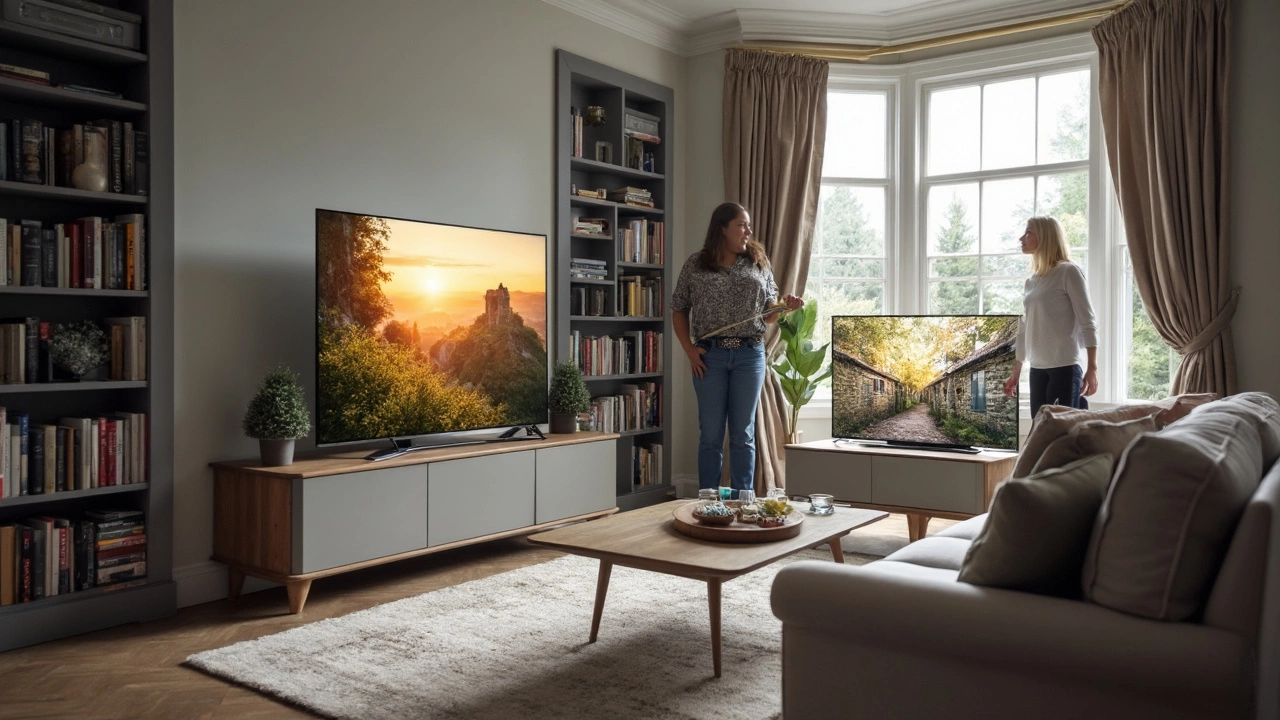TV dimensions: how to pick the right size for your room
Got a new TV on the wishlist but not sure how big it should be? It’s a common dilemma – you want a screen that looks great, fits the furniture you already own, and feels comfortable to watch. The good news is you don’t need a math degree to figure it out. A few quick measurements and some simple rules will point you to the perfect size.
Measure your space and decide on screen size
First, grab a tape measure and note the width of the wall or TV stand where the screen will live. Leave at least a few inches of breathing room on each side – you don’t want the TV to look squeezed. Next, think about the height. Most people mount the TV so the middle of the screen is at eye level when they’re seated. If you’re using a stand, measure the stand’s width and compare it to the TV’s width (the screen’s diagonal is the marketing number, but the actual width is a bit less).
A quick rule of thumb: the TV’s width should be about 2/3 to 3/4 of the wall space you have. If you have a 120‑cm (4‑ft) wide spot, a 55‑inch TV (about 48 inches wide) fits nicely, while a 65‑inch model would feel cramped. Write down the dimensions you’re comfortable with before you start scrolling through product lists.
Match TV size to stand and viewing distance
Now that you know what will fit, think about how far you’ll sit from the screen. The ideal viewing distance is roughly 1.5 to 2.5 times the diagonal size of the TV. For a 55‑inch set, that’s about 6.5 to 11 feet. Sit where you usually relax – on the sofa, a recliner, or a comfy chair – and measure that distance. If your sofa is 8 feet away, a 55‑inch TV is a sweet spot; a 75‑inch screen would force you to move closer or strain your eyes.
Don’t forget the TV stand. The stand’s width should be equal to or slightly wider than the TV’s width, giving the screen a stable base. If you’ve found a 55‑inch TV that fits your wall, look for a stand labeled “55‑inch TV stand width” or check the product specs. Many retailers list the recommended stand size – aim for a stand that’s at least as wide as the TV’s actual panel, not the advertised diagonal.
Finally, consider height. If the TV sits on a stand, the bottom of the screen typically lands a few inches above the stand’s surface. Adjust the stand height or use a wall mount to line up the screen’s center with your eye level. This small tweak makes long‑movie marathons a lot more comfortable.
Putting it all together: measure your wall or stand, calculate a comfortable viewing distance, and pick a TV whose width fits within 2/3‑3/4 of that space. Check the stand’s width and height, then you’re ready to shop with confidence. No more guessing, no more awkwardly large screens, just a TV that looks great and feels right.
How Much Bigger is a 65 TV Than a 60? Real Size Comparisons for TV Stands
Is a 65-inch TV worth the size jump from a 60-inch? This article explores the real-life difference between the two, how it impacts your space and which TV stand fits better. You'll get clear measurements, practical tips for setup, and surprising facts about diagonal screen sizes. If you're trying to decide what TV stand to buy, this is exactly what you need.
MoreHow Wide Are Most 65-Inch TVs? Get the Best Fit for Your Space!
Figuring out how wide a 65-inch TV can be is key when choosing the right TV stand or ensuring a snug fit in your living space. While a 65-inch TV typically measures around 57 inches wide, there can be a variety of conditions affecting these dimensions. This article dives into everything you need to make an informed choice, including practical tips to help you set up your TV perfectly and avoid unnecessary hassle.
More

